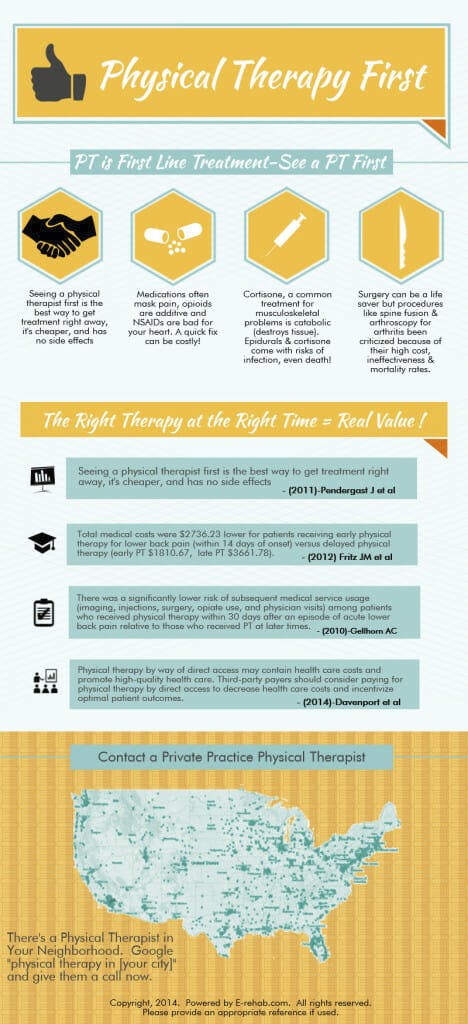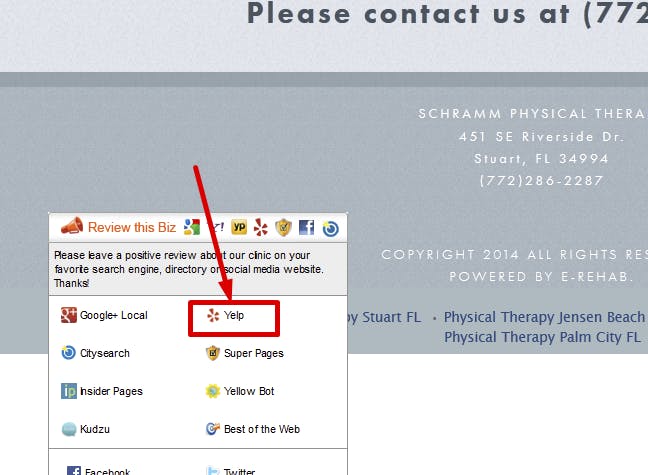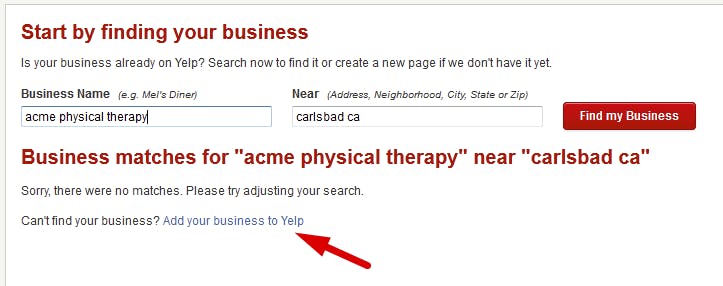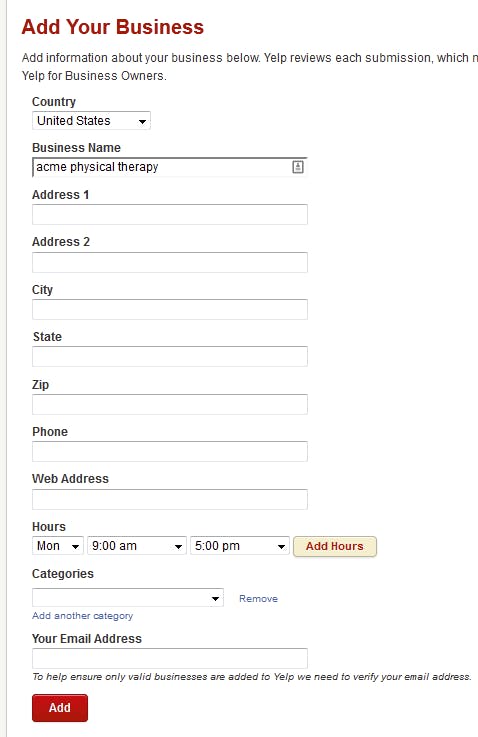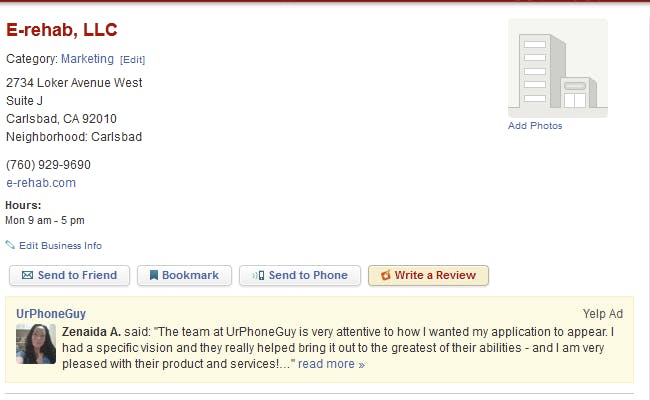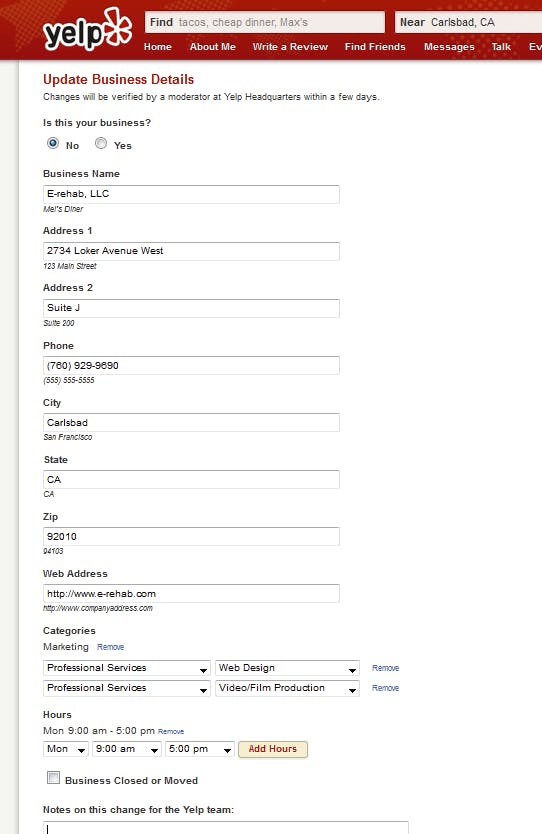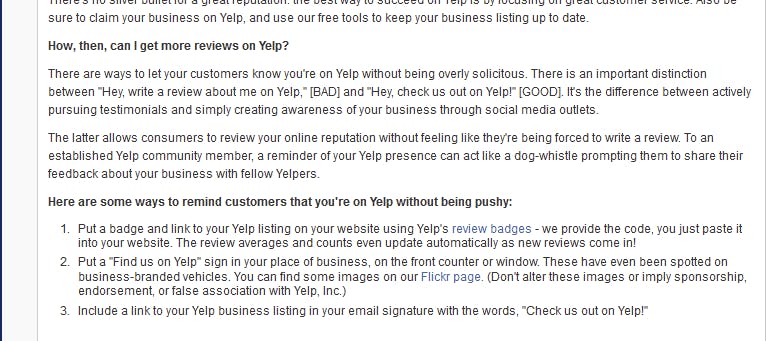Simplicity of Technology Breeds More Competition
 More and more physical therapy practices these days are joining the online revolution and giving their business an online presence. On the one hand, technology has made it so much easier to accomplish this. Almost anybody with virtually no technical skills can take their business online.
More and more physical therapy practices these days are joining the online revolution and giving their business an online presence. On the one hand, technology has made it so much easier to accomplish this. Almost anybody with virtually no technical skills can take their business online.
However, on the other hand, with so many practices going online, the level of competition is getting tougher as each day goes by.
As a private practice, you have a tough challenge ahead of you, as you need to get yourself noticed, build your online brand and attract new patients to bring in more business.
The good news is that it isn’t all an uphill struggle.
There are so many online marketing strategies that you could use to promote your practice, but one of the best marketing methods is the use of social media. Small businesses and large-scale corporations alike are using social media to promote their products and services.
How to Use Social Media for Your Physical Therapy Practice
With the use of social media, you will have that much-needed leverage to not only stay in the game, but also positively flourish and enjoy huge profits that you wouldn’t have had if without the focus on an online presence.
This is great news for businesses and gives you the perfect platform to promote your practice. If you’re looking for an affordable means of marketing your practice, then social media is definitely the direction you need to go.
With so many different platforms to choose from, you will be able to find the perfect one that suits your practice and start reaping the rewards very quickly, compared to the traditional means of marketing.
A Brief Overview of Social Media Marketing
When it comes to reaching a wider target audience, the numerous social media sites on offer will not let you down. The most popular social media networking sites have millions of active users all around the world.
You will have a much better overall Internet marketing strategy if you include social media as part of your marketing campaign. With it, you’ll be able to easily promote and market your company, as well as the products and services you are offering.
It’s an incredibly effective method of gaining better company branding. In addition, it is easily one of the most affordable online marketing strategies, and allows you to share content, photos and video sharing that will engage with your customers and fans which will then, in turn increase your web traffic, online and presence and sales.
Benefits of Social Media Marketing
[note_box]There are several things that you can do with social media marketing that will help your practice by providing you with various benefits such as:
• Better company brand recognition
• Increase the public’s awareness about the services and treatments you offer
• Interact, socialize and build a stronger relationship with your patients
• Gain new patients while also retaining existing ones
• Provide excellent customer service in an effective way[/note_box]
Here are some other reasons why your practice should be involved in social media marketing:
It Helps You Establish the Identity of Your Company. You can use this to your advantage and make your services more recognizable to the public. With social media, you can create the buzz for your practice and attract lots of new patients.
You Get More Exposure. Almost all of the social media sites have a ‘share’ feature, which means that your fans and followers can help spread the word about your services by sharing your posts and content with other people that they know. Testimonials such as a successful recovery from an injury are a great way to get the word out as well, and can be easily shared on social media.
Great for Feedback. Social media marketing quickly allows you to get to know what other people are saying about your practice and how they feel about the treatment you provide. This feedback is invaluable because you will be given the opportunity to improve your services when needed and adjust them to better suit the needs of your patients. You will also be able to answer any questions that your patients might have in a professional, timely and interactive manner. This will help you to attract even more potential patients.
Enjoy Higher Search Engine Ranking. By making good use of social media marketing, not only will you get all of the great benefits mentioned above, but your website will also have higher search engine ranking. Sites like Google are rewarding websites who have a good social medial reputation. If your practice is active on these sites, then your website could get a much higher ranking in the search engines.
General Strategy for Super Social Media Marketing
Despite its many advantages, some small businesses are daunted by the prospect of promoting their businesses on social media sites. It is fast-paced and constantly changing. Don’t let that put you off, as these traits can actually work to your advantage.
Here are some tips that will help give you a solid foundation in social media:
Figure Out Which Platform Will Work Best for Your Practice:
Unless you happen to have unlimited resources at your disposal to set up an advertising campaign on every social media platform available, chances are you will just want to focus on one or two sites instead.
In fact, depending on your practice, not every social media site is going to suit your marketing, your audience or what you are trying to achieve.
For example:
For a business heavily reliant on SEO, then Google+ and blogging might be the way to go.
If your practice is trying to get involved with community building, then Facebook, blogging and Twitter will be better for you.
If you’re undecided which platform to use, the best advice when you are first starting off is to experiment with the social media platform that you think will work best for your practice, and then measure the progress, or lack thereof. If you are not getting the results you expected, then you can refocus on other platforms that might suit your practice better.
Once you are established and comfortable on, for example, a Facebook, Twitter and YouTube account, you can then start thinking about expanding on to Pinterest or Instagram. Use whatever is best for you and your practice.
If expanding doesn’t work or is too much for you, then concentrate all of your efforts on the social media network that works best for your practice. You don’t want to run the risk of spreading yourself too thin and becoming a jack-of-all-trades but master of none. Trying to be active on too many sites will only drain you of time and resources and you won’t achieve what you wanted to from social media marketing.
Define and Access Your Goals
Know in advance what you want to achieve from your social media marketing. Whether it is brand awareness, more sales or customer loyalty, stick to one main goal at a time. For example, your goal might be; “I want to increase traffic to my website by 15% in the next three months”. During those months, evaluate how your marketing is going and make the changes needed in order to reach the goal.
Test, Tweak, Re-test and Repeat
It is unlikely that you are going to get everything right on your first attempt at social media marketing.
With that in mind, don’t be afraid to experiment. Test the waters with new ideas, tweak old ones and repeat what works for you. It is imperative that you evaluate your progress with social media marketing regularly and brainstorm ideas on how you can improve your ongoing marketing campaign.
Slow and Steady Wins the Race
Social media success doesn’t happen overnight. Just like in real life, friendships and bonds between you and your patients can take a long time to build. Keep working at getting results. So many small businesses dive into social media marketing with so much enthusiasm, only to give up not long afterwards because they didn’t have the 1.5 million Facebook fans and a ton of sales in their first few weeks like they imagined. Be patient. It takes a lot of time and dedication but they rewards are huge once it happens.
Don’t Over-promote: Build Relationships
We can’t overemphasis this point enough: the vast majority of social media users do not visit Facebook, Twitter, YouTube and the like to be given the hard sell by companies.
Your job is to build trusting and loyal relationships on the social media sites by being friendly, sharing great content, helping people and earning their trust. Just like in the real world, social media followers will relate to a name and reputation that they can trust. All of this hard work will build a positive image around your practice’s name and will soon convert into more business.
The Rule of Thirds
An easy way to balance out your social media output is to think of the rule of thirds: For one third of your time, share your own content, another third with material related in topic but from another source, and then interact with your patients and help them out on a one-to-one basis for the final third of your time.
Engage With Your Fans…But Do It the Right Way
One of the biggest traps that many businesses fall into is that of posting certain kinds of posts as bait to encourage likes and comments. The most obvious examples are; “Fill in the blank” and “Click LIKE if you think X is X…” and so on. While these are great for occasional use, they do not give you a very accurate overview of fans and customers who are really engaged with your content and how successful your efforts really are. Anybody can post an image of a cute puppy to get ‘likes’ but what real impact does it have on your fans opinion of your brand?
Create a Content Calendar
Translate your social media policy ideas into concrete steps for action. An excellent way to do this is by creating a content calendar that can be edited as time goes by. Plan what content you are going to put on your social media site and when.
Your Social media Marketing is Important, So Be Careful Who You Assign to Run It
You get what you pay for, and the cost to your practice could be more detrimental to your business than positive. Remember, thousands, even millions of people could be watching how your business presents itself online. You need to watch over it and make sure that the right message is getting out there.
Put Your Audience First
Think about your target audiences needs, wants and challenges. Use market research to find out where your social media efforts are best targeted.
Spend Time Listening and Observing
One of the most powerful planning tactics for social media marketing is to watch and listen to what people are saying about your practice and the physical therapy industry. Use this information to tailor your approach as time goes on.
Never Attack Your Competitors
Unless you want to damage your brand considerably, never attack your competitors maliciously on social media sites. Instead use social media to communicate and sell better than them.
Have Fun
As mentioned earlier, social media is all about building relationships. Be consistent, present, real and genuine in all of your communication if you want to encourage genuine interaction with patients on a slow and steady path to creating long-lasting relationships.
[colored_box variation=”steelblue”]Social media marketing has become an indispensable tool for local businesses just like your own private physical therapy practice. It gives you the perfect opportunity to build relationships, engage with customers and increase sales like never before.
Feel free to contact us at E-Rehab for expert advice and support in your online marketing campaigns. We will be glad to help.[/colored_box]









